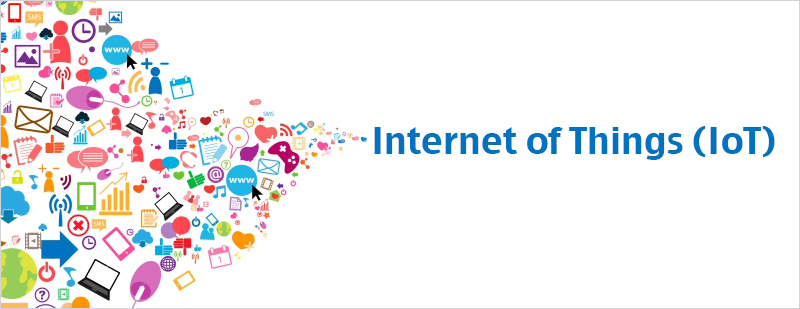Internet of Things (IoT) Go Back

Internet of things (iot) or internet of physical objects is next generation internet concept that connects everyday objects and devices to internet. Objects start to embed intelligence and initiate actions and communication on context basis that make "smart items". In this environment, objects can react quickly and in real time avoiding the overhead of communication each time with a central server. Objects become loosely distributed around the physical world. Interconnection of objects define the ontology for business services. Physical objects have a digital presence that defines the identity of the object including it's characteristics. Physical world connected to digital world in this concept.
"Any THING" Dimension
- A new dimension for the world of information and communication
- AnyTime, AnyPlace connectivity for AnyOne and Anything
- H2T/T2T: Human-to-Thing(H2T), Thing-to-Thing(T2T) communication without using PC shall be enabled
- New dynamic network of networks that interconnect everything from tires to toothbrush that might be in the communication range Today's internet giveaway to internet of things
- internet of things connects the world's objects in both a sensory and intelligent manner
Technology Innovations in a number of areas from wireless sensors to nanotechnology required for enabling Internet of Things era.
Identification Technology: Things/Items need to be identified uniquely as a first step. RFID an enabling technology for item identification and technologies like GPS shall also be used integrated with identification technologies.
Wireless communication: Mobility will be also important in user space. Mobile devices and wireless communication technologies will be enhanced. Existing communication infrastructure shall not be enough to handle the high volume of data transfer in this environment. Data communication security will be so important in an environment that exchange a lot of information invisible to user.
Sensor technology: Ability to detect changes in physical status of things important using sensor technologies. Sensors attached to physical object not only identify the location of the items, but also can detect the context. Sensors embed programmable logic that enable the context awareness on nodes.
Artificial intelligence: Embedded intelligence in the things themselves can further enhance the power of the network by devolving the information processing capabilities to the edges of the network.
Nano technology: Smaller and smaller things will have the ability to interact and connect. Innovations in Nano technology make this concept realistic and universal.
Virtual Reality: Virtual operational environments become a reality through second life applications. Virtual reality influence the functioning of social life.
Ubiquitous Network: Technology innovations advances quickly and services become ubiquitous. Middleware and applications that suit "internet of things" concept will be required. Ubiquitous network design methodologies and frameworks will be required. Context detection and processing ability to initiate actions shall be embedded on nodes in this network. These networks need to be highly scalable and flexible to adopt changes in the semantic of web.
Storage/Mining: Mass storage of data and the mining of information from this data will be important. High end data storage and retrieval technologies need to get data from big databases without a delay.
Challenges
Network: Present wireless communication networks and infrastructure will not be adequate and innovations in communication technologies shall come. Mass deployments and large scale operations through daily life scenarios with data communication need innovation in communication technologies and infrastructure.Standard: Establish global standards that make sure data exchange secure, reliable, simple. Privacy protection standards will be important for this concept to come true. Different country, state or union has their own security policy or legal regulations that need to be addressed. Global standards will be important like global language for business.
Privacy/Security: A lot of data exchange without the user awareness in their daily life requires high reliability and trust for system and standards for its wide adoption. User awareness on how data security assured will be important.
Software: Software technologies that enable reusability and scalability need. Applications that leverage end user experience in this environment shall be developed. Mass storage devices and repositories that can communicate each other make the scenario complex and requires reliable data storage and quick retrieval of information on demand.
Market/Economy: Business models that derive value for end users will be required. Investments shall be huge and return on investments may take time. Initiative and support from governments and industry leaders necessary for this new digital era.
white papers
DHLTrendReport_Internet_of_things Copyright © 2015 bqtech.co.in All rights reserved.